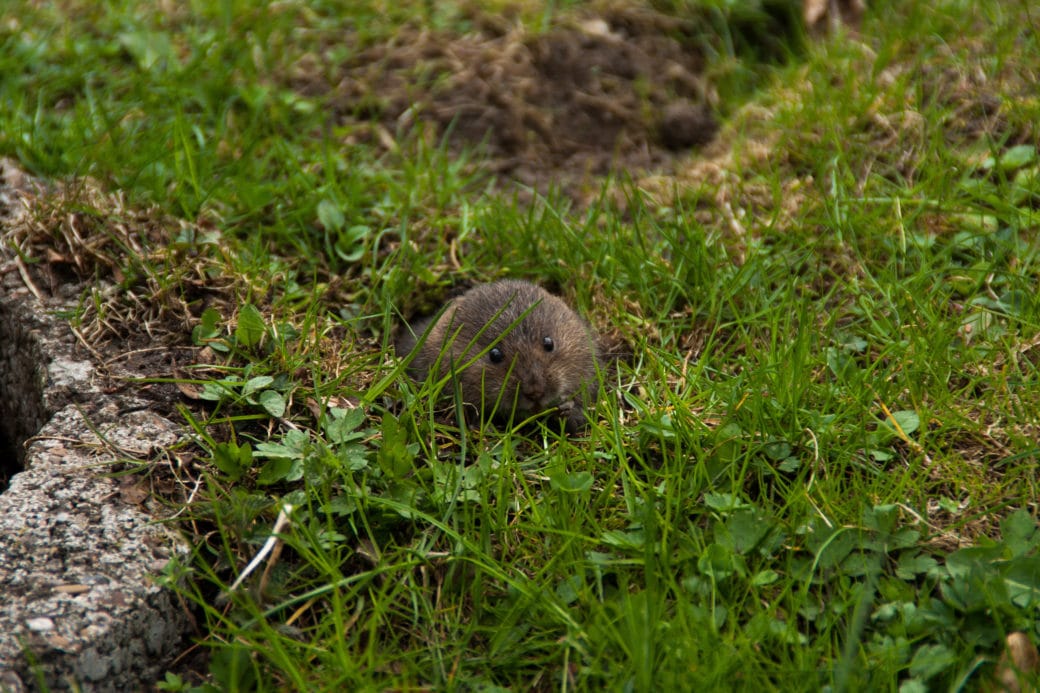Changes in Small Mammal Trophic Interactions (SMaTI) in response to land-use intensity and biodiversity
Small mammals play a crucial role in many ecosystem processes in natural and managed ecosystems, such as seed predation, herbivory, and the predation of invertebrates. The SMaTI project is the first that aims to empirically assess changes in trophic interactions and ecosystem process rates by small mammals in response to land-use intensity, and local and seasonal biodiversity in grassland and forest.
Changes in trophic interactions along the land-use gradient will be analysed by (1) metabarcoding of plant and animal DNA in stomach contents of mice, voles (Rodentia), and shrew (Eulipotyphla). This detailed snapshot of the diet will be completed by (2) information on the long-term resource use and trophic position provided by stable isotope analysis of muscle tissue. (3) Changes in the contribution of small mammals to seed and invertebrate predation under different land-use intensities and changing management regimes will be assessed by a combination of cafeteria experiments and camera observations. This method allows the identification of consumers and calculation of per capita consumption of seeds and sentinel prey by distinct consumer groups.
The highly detailed data on trophic interactions will provide valuable insights into mechanism underlying dynamics in species composition and ecological processes in complex real-world ecosystems.

Species interactions are the drivers of ecosystem processes and determinants of ecosystem functioning in multitrophic communities. However, studies concerning the influence of land-use intensity on biodiversity and species-mediated ecosystem processes have often measured the numerical response of species or ecosystem process rates without directly capturing interactions between species. Therefore, the SMaTI project aims to empirically assess changes in trophic interactions along the land-use gradient by metabarcoding plant and animal DNA in the stomach contents of small mammals.
Hypotheses
- Higher dietary richness at low land-use intensity and high plant and animal diversity.
- Changes in dietary composition with land-use intensity and season driven by opportunistic feeding on locally and seasonally abundant plant or animal resources.
Methods
- Mice, voles, and shrews will be captured by the LaBiRo project in spring, summer, and fall.
- Stomach contents will be analysed by DNA-metabarcoding using general primers for standard barcoding regions (e.g., COI, 16S, trnL) and reference database (e.g., BOLD, NCBI).
The detailed snapshot of the diet provided by stomach content metabarcoding (1) will be completed by stable isotope analysis from muscle tissue. Isotopic fractions of δ15N and δ13C provide a temporally integrated measurement of feeding relationships and will be used to further estimate changes in the trophic positions and dietary niche of small mammal species in response to season and local management practice.
Hypothesis
- Increase in niche space and shift of the trophic position towards more omnivory by switching to alternative food resources at high land-use intensity.
Methods
- Mice, voles, and shrews will be captured by the LaBiRo project in spring, summer, and fall
- Analysis of isotopic fractions of δ15N and δ13C in muscle tissue will be conducted.
Predation rates on seeds and sentinel prey will be assessed by a combination of cafeteria experiments and camera observations to measure the effects of (modified) land-use intensity on the contribution of small mammals to ecosystem processes.
Hypotheses
- Higher seed predation at locations with low land-use intensity due to the preference of small mammals for dense vegetation.
- Changes in visitation rates of different species (or broader taxonomic groups) with modified land-use intensity driven by changes in the consumer community structure.
- Per capita consumption by visitors change with modified land-use intensity driven by changes in the attractiveness of experimental food against the background of available resources.
Methods
- Exposure of seeds and sentinel prey in the REX and FOX plots in HAI with experimental land-use treatments will take place in 2021.
- Camera observations of predation events will be made.
- Identification of consumers and per capita consumption will be performed.









